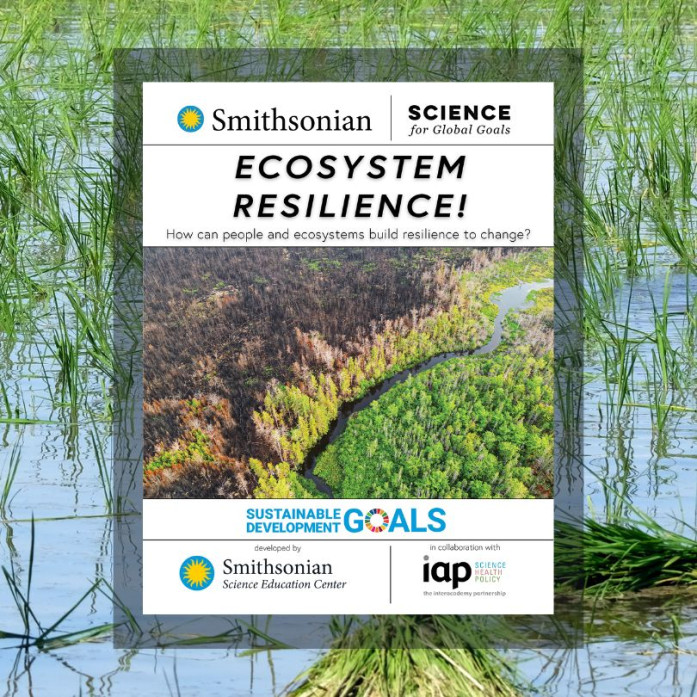New Freely Available Guide for Youth Encourages Students to Discover, Understand and Act on Ecosystem Resilience Topics
WASHINGTON, DC / ACCESSWIRE / August 27, 2024 / All people live within and are reliant on ecosystems, and our actions are increasingly threatening these vital systems. Right now, 75% of agricultural crops are at least partially dependent on pollinators, but because of people, the populations of many pollinator insects are in decline. Over half the world's GDP is moderately or highly dependent on nature. Our food, shelter, oxygen, and even the climate we live in are all at risk due to the growing stress we place on these ecosystems.

The cover of the Ecosystem Resilience! Guide with an image of a landscape with burnt forests and green forest separated by a river.
The Smithsonian Science Education Center, in collaboration with the Smithsonian Tropical Research Institute and the InterAcademy Partnership (IAP), has developed Ecosystem Resilience! How can people and ecosystems build resilience to change? The new community research guide for youth ages 11-18 is underpinned by the U.N. Sustainable Development Goals and highlights strategies for local adaptation to global impacts of ecosystem resilience around topics like pollution, deforestation, and climate change.
As part of the Smithsonian Science for Global Goals project, Ecosystem Resilience! is the thirteenth freely available guide. Ecosystem Resilience! encourages youth to explore resilience concepts such as biodiversity, connectivity, ecosystem-based adaptation, and biomimicry, applying them both to specific ecosystems and to human communities. As students take on the role of action researchers, they gather data about their communities and evaluate potential nature-based solutions for their own resilience and the resilience of the ecosystem around them.
"We have seen firsthand that students and teachers want more sustainable development topics like ecosystem resilience in their classrooms. In this guide we encourage students to discover and understand resilience concepts around grasslands, forests, shorelines, and deserts, and act locally to contribute to a more resilient future for these ecosystems," said Carol O'Donnell, the Douglas M. Lapp and Anne B. Keiser Director of the Smithsonian Science Education Center. "We want to help students to reimagine the relationship between people and ecosystems to allow both to thrive."
Ecosystem Resilience! How can people and ecosystems build resilience to change? is supported by the Adrienne Arsht Community-Based Resilience Solutions Initiative. The conceptual framework for all Smithsonian Science for Global Goals guides was funded through a grant from the Gordon & Betty Moore Foundation.
About the Smithsonian Science Education Center
The Smithsonian Science Education Center (SSEC) is transforming K-12 Education Through Science in collaboration with communities across the globe. The SSEC is nationally and internationally recognized for the quality of its programs and its impact on K-12 science education. Visit the SSEC website to learn more about the Smithsonian Science for Global Goals project and follow SSEC on X and Facebook.
Contact Information
Logan Werlinger
Marketing and Communications Manager
werlingerlr@si.edu
SOURCE: Smithsonian Science Education Center
View the original press release on newswire.com.












